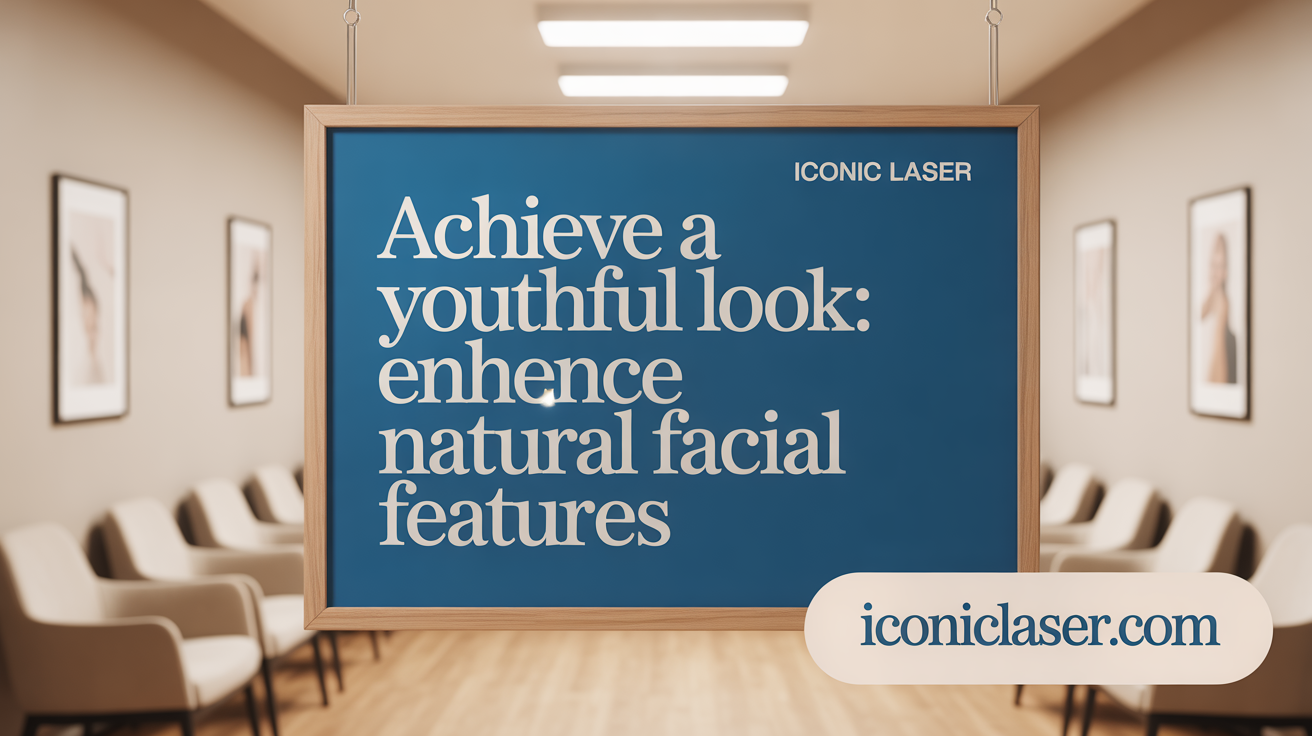Understanding Facial Contouring as a Revolutionary Anti-Aging Solution
Facial contouring has emerged as a transformative strategy in the pursuit of youthful, balanced facial aesthetics, especially for aging skin. This article explores how facial contouring works as an anti-aging approach, revealing its mechanisms, benefits, and suitability for diverse individuals. We delve into the scientific rationale behind treatments ranging from fillers to innovative skin-tightening technologies, highlighting how facial contouring effectively restores volume and redefines facial structure to combat the visible signs of aging.
The Science of Facial Aging and the Need for Contouring Treatments

What is facial contouring and how does it work as an anti-aging strategy?
Facial contouring is an approach to reversing or minimizing the visual signs of aging by restoring the face's natural shape and structure. As we age, our skin and underlying tissues undergo changes that lead to a less defined, more sagging appearance.
This process involves various treatments aimed at addressing specific signs of aging, including volume loss, skin laxity, and tissue displacement. Common methods include the use of dermal fillers made from hyaluronic acid, fat grafting, and skin-tightening technologies that stimulate collagen production.
These procedures work by replenishing lost volume in areas such as cheeks, temples, and jawlines, which tend to thin out over time. They also support the skin's structural integrity, resulting in a lifted, firmer appearance.
In addition to structural support, topical and invasive treatments that boost collagen, elastin, and glycosaminoglycans (GAGs) are used to improve the skin’s texture, firmness, and hydration. This combination of tissue volume restoration and skin quality enhancement creates a more youthful, balanced face.
Ultimately, facial contouring achieves a harmonious aesthetic by emphasizing natural features and diminishing signs of aging like wrinkles, sagging skin, and hollowed cheeks. The result is a refreshed, more vibrant look that can boost confidence and self-esteem.
Mechanisms Behind Facial Contouring Treatments: Fillers, Fat Grafting, and Thermage

How do fillers restore volume and stimulate collagen?
Dermal fillers, mainly composed of hyaluronic acid, provide immediate volume enhancement by supporting the skin from underneath. When injected, they replace lost volume in areas like cheeks, lips, or under-eye hollows, restoring youthful contours. Besides the immediate boost, hyaluronic acid fillers stimulate natural collagen production over time. This process occurs as the body recognizes the filler as a foreign substance, prompting collagen synthesis to improve skin firmness and elasticity, leading to longer-lasting rejuvenation effects.
How does fat grafting contribute to natural volume replenishment?
Fat grafting involves transferring the patient’s own fat from one part of the body, such as the abdomen or thighs, into facial areas requiring volume restoration. This method offers a natural tissue source, ensuring biocompatibility and a more permanent result compared to temporary fillers. The transferred fat not only restores volume by physically filling the space but also provides ongoing support by integrating into the facial tissue. Additionally, fat contains stem cells that can promote tissue regeneration, further improving skin quality and contours over time.
What role does Thermage and radiofrequency skin tightening play?
Thermage uses monopolar radiofrequency energy to gently heat the deep layers of the skin. This controlled heating causes small amounts of collagen to undergo controlled damage, which triggers the body’s natural healing response. Over the following months, this stimulates the production of new collagen fibers, resulting in tighter, firmer skin. Unlike fillers that restore volume, Thermage focuses on volumetric skin tightening and lifting without surgery. It enhances facial contours by improving skin elasticity and reducing sagging, thus addressing age-related tissue laxity.
How do these treatments collectively improve facial contours?
Together, these approaches target different aspects of facial aging. Fillers and fat grafting restore volume lost due to aging, while Thermage stimulates collagen and enhances skin firmness. The synergy of tissue support and skin tightening results in a more youthful, balanced, and natural facial appearance. This multi-modal approach effectively counters the effects of gravity, collagen depletion, and soft tissue softening, providing comprehensive facial rejuvenation and improved confidence.
Addressing Age-Related Volume Loss: Restoring Youthful Facial Contours

How does facial contouring specifically address age-related volume loss?
As we age, our face undergoes natural changes that include a loss of volume in key areas like the cheeks, temples, and under the eyes. This volume loss leads to a hollowed, sagging appearance and a less defined facial structure.
Facial contouring techniques aim to restore these lost volumes, effectively reversing some signs of aging. The most common approach involves the use of dermal fillers, especially those containing hyaluronic acid, which can be carefully injected into targeted areas such as the cheeks, temples, and jawline.
These treatments re-inflate sunken regions, helping to restore a fuller, more youthful look. They create a smoother, more contoured appearance by filling in hollowed-out zones and lifting sagging tissues.
Restoring volume in the midface and chin can reshape the face into the desirable 'inverted triangle' shape that is typical of youthful faces, where the upper face is wider and gradually narrows down toward the chin.
Fat grafting is another option for more permanent volume restoration. It involves transferring the patient's own fat from other body areas to restore lost volume, providing long-lasting results.
By replenishing volume, facial contouring not only enhances facial harmony but also improves expressions, making the face appear more vibrant and energetic.
Ultimately, these procedures counterbalance the natural effects of gravity and tissue descent, helping individuals achieve a more youthful, refreshed appearance.
Benefits of Facial Contouring: Beyond Aesthetics
Facial contouring plays a significant role in enhancing the overall harmony and balance of facial features, which can be especially beneficial as the skin ages. As we get older, natural volume loss in areas like the cheeks, temples, and under the eyes can lead to a hollowed, tired appearance. Contouring procedures such as dermal fillers, fat grafting, and surgical options like chin or cheek implants help restore this lost volume, making the face look more youthful and lively.
These procedures also address common signs of aging, including wrinkles, sagging skin, and drooping contours. For example, treatments like neck lifts and facelift surgeries can tighten sagging skin, creating a smoother and more defined profile. Non-surgical options, like JUVÉDERM VOLUMA® XC and Thermage, stimulate collagen production and improve skin firmness, providing a subtle lift and rejuvenation.
Beyond improving physical appearance, facial contouring significantly boosts confidence and self-esteem. When individuals feel happier with how they look, it often translates into greater social interactions and personal satisfaction. The results from many contouring techniques tend to be long-lasting and offer a natural appearance. Whether through surgical or non-invasive methods, face reshaping can deliver lasting, natural-looking improvements that help individuals feel and look younger, more attractive, and more confident.
Facial Contouring Versus Other Non-Surgical Rejuvenation Methods

What is the role of facial contouring in restoring youthful facial contours compared to other non-surgical facial rejuvenation methods?
Facial contouring is a central component in restoring youthful vitality by improving the face's structure and harmony. Unlike treatments that focus mainly on surface skin issues, such as skin resurfacing or laser treatments, contouring targets the underlying bones, fat pads, and soft tissues. This approach helps enhance facial symmetry, define features, and correct age-related volume loss.
Non-surgical options like dermal fillers, fat grafting, and thread lifts can quickly add volume to areas like cheeks, jawlines, and chin, creating a lifted and more vibrant appearance. Dermal fillers, especially those containing hyaluronic acid, provide immediate results by restoring volume and contour, while thread lifts stimulate natural collagen production for longer-term lift and firmness.
In contrast, procedures like Botox primarily relax muscles to reduce dynamic wrinkles but do not significantly alter the facial structure.
Combining facial contouring with skin tightening methods, such as radiofrequency or ultrasound treatments, offers a comprehensive approach to facial rejuvenation. These combined strategies work together to restore the face's natural three-dimensionality, plumpness, and elasticity.
Customization is a significant advantage of non-surgical contouring: treatments can be tailored for younger patients seeking subtle improvements or older individuals with more pronounced volume and sagging issues. The results tend to develop gradually, providing a natural look without the risks of invasive surgery.
Overall, facial contouring's role in non-surgical rejuvenation is pivotal in achieving a youthful, balanced, and natural facial appearance by addressing the structural bases of aging and revitalizing the face’s three-dimensional form.
Suitability and Considerations in Facial Contouring Treatments
How suitable are facial contouring treatments for different individuals?
Facial contouring procedures are generally suitable for a diverse group of individuals seeking aesthetic enhancement or age-related improvements. However, suitability varies based on personal factors and health conditions. A comprehensive evaluation by a qualified specialist is crucial to determine the best approach tailored to each person's unique facial structure, skin condition, and overall health.
Personalized assessment includes examining the bone structure, fat distribution, muscle activity, and skin elasticity. These factors influence whether a patient is a better candidate for surgical options like face lifts or non-invasive treatments such as dermal fillers and laser therapies.
Candidates should be in good general health, free from active skin infections, uncontrolled medical conditions, or bleeding disorders. Realistic expectations and a clear understanding of the procedure's capabilities and limitations are essential.
Customization based on age, skin type, and ethnicity
Age, skin type, and ethnicity significantly impact the choice of facial contouring procedures. Younger individuals might prefer subtle, non-surgical enhancements, while older patients often seek more comprehensive rejuvenation to address sagging skin and volume loss.
Ethnic differences in facial anatomy influence treatment planning. For example, certain procedures might aim to preserve ethnic features while enhancing contour, ensuring results look natural and harmonious.
Skin type also matters; those with darker skin tones should consider treatments with minimal risk of pigmentation changes, favoring laser therapies or non-invasive options over some surgical procedures.
Choosing between surgical and non-surgical approaches
The decision between surgical and non-surgical treatments depends on the extent of aging signs, desired outcomes, and personal preferences. Non-surgical options like dermal fillers, Botox, radiofrequency treatments, and thread lifts offer immediate results with minimal downtime. They are ideal for subtle changes or early aging signs.
Surgical procedures such as facelifts, neck lifts, or chin augmentations deliver more dramatic and long-lasting results, suitable for individuals with significant sagging and volume loss. They require longer recovery but often provide transformative outcomes.
Consultation with a specialist helps clarify the most suitable approach, considering the patient's goals and the risks involved.
Risks, recovery, and importance of professional consultation
All facial contouring procedures carry potential risks, including swelling, bruising, asymmetry, infection, or unsatisfactory results. Surgical methods have additional risks related to anesthesia and longer recovery times.
Recovery varies depending on the procedure: non-invasive treatments may require only a few days of downtime, while surgical options might take weeks. Proper post-procedure care is vital to ensure optimal results and minimize complications.
Ultimately, professional consultation with experienced practitioners is essential. They can provide insights into the most appropriate options, set realistic expectations, and guide patients through safe, effective treatment planning tailored to their individual needs.
The Future of Facial Contouring in Anti-Aging Care
Facial contouring stands at the forefront of modern anti-aging treatments, combining science and artistry to rejuvenate aging skin and restore youthful facial harmony. Through innovative techniques like dermal fillers, fat grafting, and cutting-edge technologies such as Thermage, patients experience revitalized volume, improved skin texture, and enhanced contours without necessarily resorting to invasive surgery. Tailored to individual needs and supported by a strong scientific foundation, facial contouring offers not only aesthetic transformation but also significant psychological benefits by boosting confidence and self-esteem. As research and technology advance, facial contouring is poised to remain a key pillar in comprehensive facial rejuvenation strategies, helping individuals embrace aging with grace and renewed beauty.
References
- Facial Contouring Procedure: 5 Benefits - Dr. Robert Applebaum
- The Benefits of Facial Contouring | Dr. Rousso
- How Facial Rejuvenation Procedures Can Improve Aging Skin
- Why Face Contouring Treatments Are Gaining Popularity in Every ...
- Expert Strategies for V-Shape Face Contours - Klinik Suzana
- Facelift or Facial Contouring: Which is Right for You?
- Facial Contouring for Aging Skin: Reversing Signs of Time
